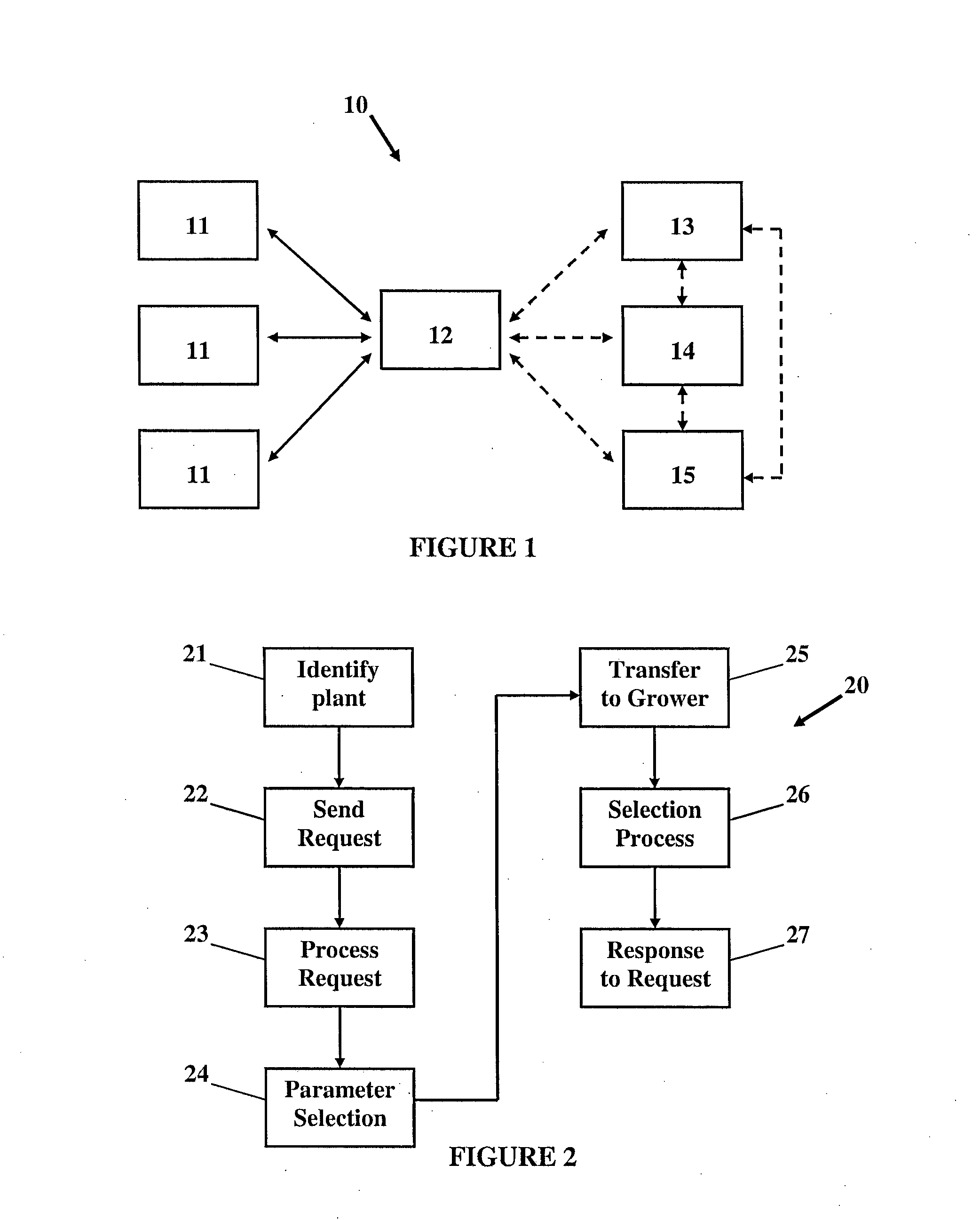Screening methods
a screening method and screening method technology, applied in the field of screening methods, can solve the problems of limited scope, low screening efficiency, and low success rate of plant traits, and achieve the effects of reducing the number of screening methods
- Summary
- Abstract
- Description
- Claims
- Application Information
AI Technical Summary
Benefits of technology
Problems solved by technology
Method used
Image
Examples
example 1
Identification of Microorganisms that Optimise Expression of Quantitative Trait Loci (QTL) Associated with Specific Phenotypes
Step 1: Identify Loci of Interest.
[0348]Specific QTL and associated genotypic and / or phenotypic expression markers are identified within the plant of choice. For example, but not limited to, QTL may be identified that code for aluminium tolerance in wheat.
Step 2: Microbe Capture:
[0349]Untreated seeds from a selected cultivar or cultivars are planted in a wide variety of soils in pots. Soils may include additional amendments comprising pure cultures of microorganisms, mixtures of microorganisms or materials containing microorganisms that derived from other sources and may include GM microbes. Alternatively, untreated seeds are planted in a wide variety of soils that are selective for the QTL of interest (eg elevated A1 concentrations for A1 tolerance QTL).
Step 3: Preparation of Inoculum:
[0350]After a suitable period of growth, the plants are removed from or wa...
example 2
Identification of Microbially-Induced Quantitative Trait Loci (QTLs) Associated with Beneficial Plant Traits
Step 1: Microbe Capture:
[0355]Untreated seeds from a selected cultivar are planted in a wide variety of soils. Soils may include additional amendments comprising pure cultures of microorganisms, mixtures of microorganisms or materials containing microorganisms that derive from other sources and may include GM microbes. Alternatively, untreated seeds are planted in a wide variety of soils that are selective for the QTLs of interest (e.g. elevated A1 concentrations for A1 tolerance QTL).
Step 2: Preparation of Inoculum:
[0356]After a suitable period of growth, the plants are removed from or washed out of the soil, and the microorganisms isolated from roots and stems / foliage, either as individual isolates in pure culture, or as mixed populations e.g. as a microbial suspension from an aqueous root crush and / or a stem / foliar crush.
Step 3: Selection.
[0357]The microorganisms are added ...
example 3
Use of Process to Select Seed-Borne Endophytes Conveying a Beneficial Crop Trait
[0364]Forage grasses expressing beneficial traits such as insect-resistance and improved tolerance to both biotic and abiotic stressors via strains of the seed-borne fungus Neotyphodium sp. have been widely adopted by farmers in New Zealand and elsewhere. It would be desirable to extend the benefits of traits similar to those expressed by this seed-borne fungus and other similar species in the fungal family, to a broader range seed-borne endophytic microbes thereby providing access to a much wider range of beneficial crop traits.
[0365]Step 1. Untreated ryegrass seeds are planted in a wide variety of soils in small pots. Soils may include additional amendments comprising pure cultures of microorganisms, mixtures of microorganisms or materials containing microorganisms that derived from other sources.
[0366]Step 2. After a suitable period of growth, the plants are washed out of the soil, surface sterilised ...
PUM
| Property | Measurement | Unit |
|---|---|---|
| Pressure | aaaaa | aaaaa |
| Composition | aaaaa | aaaaa |
Abstract
Description
Claims
Application Information
 Login to View More
Login to View More - R&D
- Intellectual Property
- Life Sciences
- Materials
- Tech Scout
- Unparalleled Data Quality
- Higher Quality Content
- 60% Fewer Hallucinations
Browse by: Latest US Patents, China's latest patents, Technical Efficacy Thesaurus, Application Domain, Technology Topic, Popular Technical Reports.
© 2025 PatSnap. All rights reserved.Legal|Privacy policy|Modern Slavery Act Transparency Statement|Sitemap|About US| Contact US: help@patsnap.com

